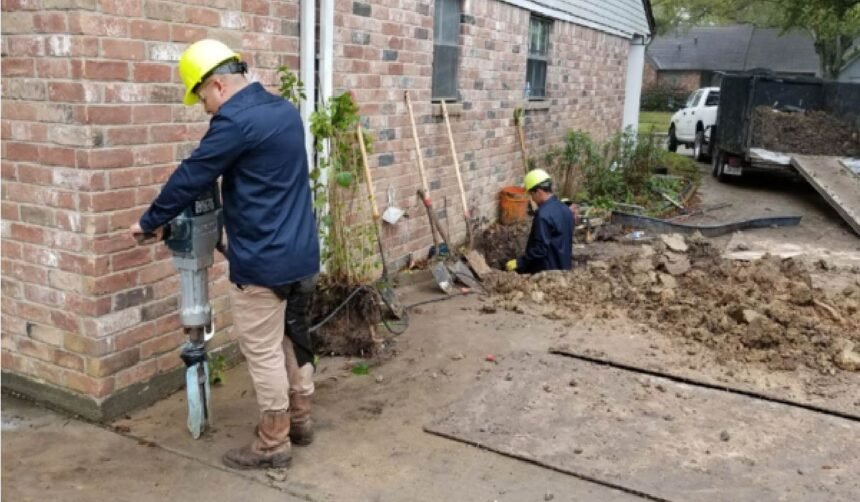When it comes to structural integrity, few elements are as critical as a well-designed and well-maintained foundation. Among the various types of foundations used in residential and commercial construction, pier and beam systems stand out for their accessibility, flexibility, and long-term reliability. However, like any structural system, they’re not immune to deterioration over time. Understanding the signs of damage and the importance of timely pier and beam foundation repair is essential for any property owner with this type of foundation.
This article will explore the structure of pier and beam foundations, common problems associated with them, repair methods, costs, and best practices for long-term care. Whether you’re dealing with a minor sag or a serious structural issue, having the right knowledge can save you money, stress, and further damage down the road.
What Is a Pier and Beam Foundation?
A pier and beam foundation consists of concrete or wooden piers placed deep into the ground, which support horizontal beams that hold up the structure. Between the floor of the building and the ground, there is typically a crawl space—an open area that provides easy access to plumbing, electrical, and HVAC systems.
This foundation style offers several advantages:
- Easy access for repairs: Crawl spaces make it simpler to fix utilities without breaking into walls or concrete.
- Good drainage: Elevated floors allow for better air circulation and less chance of water pooling under the structure.
- Flexibility on uneven terrain: Pier and beam systems can accommodate sloped lots better than slab foundations.
However, with these benefits come maintenance challenges and repair needs, particularly if the foundation has been exposed to moisture, pests, or shifting soil.
Common Issues with Pier and Beam Foundations
Pier and beam systems are durable, but they are susceptible to specific types of wear and damage over time. Here are the most common issues property owners face:
1. Wood Rot and Moisture Damage
Because many older pier and beam foundations include wood components, exposure to moisture can lead to rot, warping, or mold growth. Crawl spaces with poor ventilation or drainage are especially vulnerable.
2. Sagging or Uneven Floors
Over time, beams or floor joists may sag due to excessive weight, deterioration, or shifting support piers. This can lead to sloped or bouncy floors inside the home.
3. Shifting or Settling Piers
Soil erosion, expansive clay soils, or poorly compacted ground can cause piers to shift or settle, compromising the stability of the entire structure.
4. Insect Infestation
Termites and carpenter ants often find their way into crawl spaces and wooden beams, weakening the support structure from within.
5. Foundation Cracks and Gaps
Cracks in beams or gaps between support points can develop, particularly in regions with frequent soil movement or poor drainage systems.
Recognizing these issues early is essential. A timely inspection followed by professional pier and beam foundation repair can prevent more extensive structural problems later on.
Signs You May Need Foundation Repair
Identifying the early warning signs of foundation problems can help prevent severe structural damage. Keep an eye out for:
- Uneven or sloping floors
- Doors and windows that stick or won’t latch
- Cracks in interior walls or ceilings
- Gaps between walls and the floor
- Moisture buildup or musty odors in the crawl space
- Visible sagging or bowing of beams or joists
These symptoms don’t always mean a catastrophic issue is underway, but they warrant a professional inspection to determine if pier and beam foundation repair is necessary.
Common Pier and Beam Repair Techniques
Once a problem is diagnosed, the right solution depends on the severity and location of the damage. Some of the most common repair techniques include:
1. Shimming
Shimming involves inserting steel or wooden wedges between the beams and piers to level the structure. This is often used as a short-term fix or when minor leveling is needed.
2. Replacing or Reinforcing Beams and Joists
Damaged or rotted beams can be replaced with new treated lumber or reinforced with steel brackets and sister joists. This helps restore stability and prevent future sagging.
3. Pier Replacement or Addition
If existing piers have shifted, sunk, or deteriorated, they may need to be replaced or supplemented with additional piers. Modern repairs often use concrete pads or steel piers driven deeper into the soil for added support.
4. Moisture and Drainage Control
Repairing the foundation often involves addressing the root cause of the problem—usually moisture. This might include installing a vapor barrier, improving crawl space ventilation, or redirecting water away from the foundation with drainage systems.
5. Pest Control and Wood Treatment
If termites or other pests have compromised the structure, part of the repair process may include extermination, treatment, and replacement of affected wood.
Every repair situation is unique, which is why hiring an experienced team for pier and beam foundation repair is so important. They can properly diagnose the issue and recommend the best long-term solution.
How Much Does Pier and Beam Foundation Repair Cost?
Costs for repairs vary based on factors such as the extent of the damage, materials required, accessibility of the crawl space, and local labor rates. However, here are some general ranges:
- Minor leveling (shimming): $500–$2,000
- Beam or joist replacement: $1,000–$5,000
- Pier replacement or addition: $3,000–$10,000+
- Drainage and moisture control systems: $1,500–$6,000
- Full structural rehab: $10,000–$30,000+
While the price may seem steep, these repairs are a long-term investment in the safety and value of your property. Delaying them often leads to larger structural failures and even more expensive remediation work.
Choosing the Right Foundation Repair Contractor
Not all contractors are equipped or experienced to handle pier and beam systems. When selecting a professional, look for:
- Specialization in pier and beam foundation repair
- Licensing, insurance, and certifications
- Transparent pricing and written estimates
- Detailed inspection reports
- Warranty on work performed
- Positive reviews and local references
Avoid quick fixes or one-size-fits-all approaches. A reputable contractor will assess the full condition of the foundation, identify root causes, and tailor a solution that meets the specific needs of your structure.
Long-Term Maintenance Tips
Once your foundation has been repaired, ongoing maintenance is key to preventing future problems. Here’s how to protect your pier and beam foundation long term:
1. Maintain Proper Drainage
Ensure that water flows away from the foundation. Clean gutters, extend downspouts, and grade soil properly.
2. Ventilate the Crawl Space
Install proper ventilation to control moisture levels and reduce the risk of mold, rot, and pests.
3. Inspect Regularly
Conduct annual crawl space inspections to check for new signs of sagging, rot, or movement.
4. Seal Entry Points
Prevent pests by sealing all access points to the crawl space and using treated wood wherever possible.
5. Avoid Overloading Floors
Do not overload floors with heavy furniture or appliances without ensuring the support structure is reinforced.
Staying proactive with maintenance will reduce the likelihood of major repairs down the road.
Final Thoughts
Pier and beam foundations offer many benefits, especially in areas with variable soil conditions or where crawl space access is valuable. However, their complexity means they require regular inspection and timely repairs to maintain their structural integrity.
From minor leveling fixes to full structural rehabilitation pier and beam foundation repair should always be approached with professional guidance and care. If you notice signs of foundation trouble, don’t wait—addressing the issue early is the best way to protect your property, your safety, and your investment.
Choosing the right team and taking preventive measures will go a long way in preserving the strength and stability of your home for years to come.









